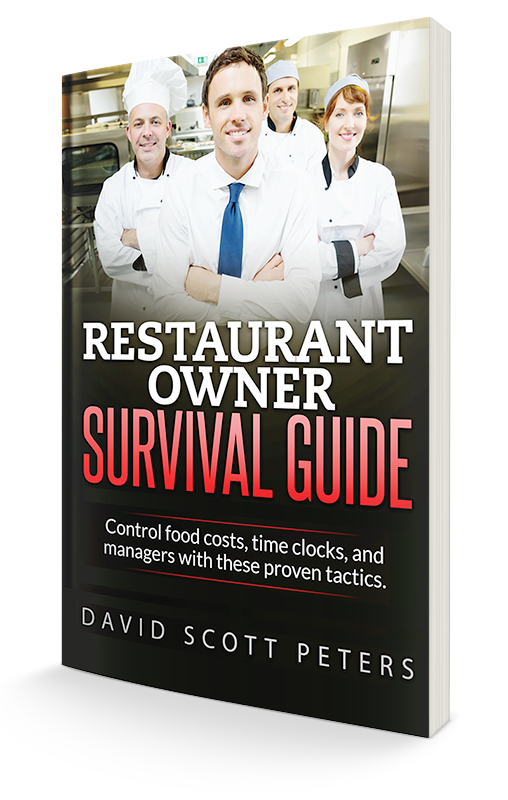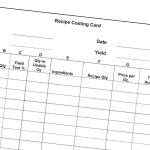7 Steps to Keep Profits Coming in the Back Door
If there’s one thing I’m likely to focus on in any restaurant, no matter who I’m working with, it’s the back door. Why? Because it’s where most restaurants bleed cash and it’s the easiest to fix.
Your back door is where you do a very important segment of your business – it’s where you order and receive your product.
I stress the importance of having systems in place to make your life easier and make you a lot more money. Well, here’s a step-by-step system that will help you do both of those things.
1) Plan where deliveries are to be accepted. If you have the room, the best place to check deliveries in is in the walk-in cooler. Most of the foods you’re receiving are perishable products and can only be out of a safe temperature zone for a total of four hours before it’s dangerous to prepare and serve. And the four hours is in total. You have no idea how many times and for how long the product has already been out of the safe temperature zone from the manufacturer to the distributor to your door. And where I live in Arizona, it can be magnified when it’s 112 degrees outside and you’re the last stop on a delivery route.
2) Work with your purveyors in advance to set up receiving time. Bring your orders in when you have trained staff to check them in (see step four). Make sure they do not attempt to deliver your order during busy times such as lunch. If the truck is running late and shows up during a busy time for your restaurant, you must refuse delivery and ask them to come back. Accepting a delivery during a rush not only affects your guest by slowing up the kitchen, but also allows for mistakes in the order to slip by — costing you real money.
3) Limit your delivery driver’s access to only delivery areas. Not that I’m saying all delivery drivers are dishonest, but some are. If you let them have full range of your restaurant, one day you might be missing a bottle or two of your most expensive tequila. So keep honest people honest and limit their access to the rest of your restaurant.
4) Have either management or a trained key employee receive orders. This is one of the most important steps. If you want to squeeze every penny of profit out of your restaurant, the person receiving your orders must be trained in your procedure or you could be losing money.
5) When checking in your delivery, follow these steps:
a. Check invoices for accuracy against your PO (hung at the back door) for each item, quantity and prices. This is your opportunity to make any adjustments to your bill before you pay more than your were quoted.
b. Check products for quality and condition. For example, you’ll want to open the case of tomatoes and dig down to the bottom. This way you can make sure the bottom of the box wasn’t packed with bad product before you accept them.
c. Check temperatures of any refrigerated products to make sure they are not out of the safe zone. The most expensive chicken wings in the world are those you accepted that have already turned.
d. Weigh products
i. Have a large scale in your receiving area. (If you don’t have one… go get one!)
ii. Check it routinely for accuracy.
iii. Remove products from packaging and/or ice before weighing and compare to the invoice weight.
e. If there are any discrepancies or problems with products that have to be returned, have the driver make note on the invoice or fill out a credit memo immediately, before signing the invoice. I had a restaurant owner at one of my first workshops tell me that he started doing this and not telling the distributor for about a week. He discovered that he was losing more than $600 a month to incorrect weights.
f. Remember that once you sign an invoice, you are responsible for payment as shown on the invoice.
6) Have stocking procedures in place as follows:
a. Get any refrigerated products into walk-in coolers or freezers immediately. Again, product that turns is money down the drain.
b. Remove and date any fresh product as may be required by your health code authority.
c. Remove any excess packaging and break down boxes as soon as possible. If you’re throwing boxes away without doing this, I can guarantee you’re paying more for your rubbish removal. Every penny counts.
d. If you are breaking down all of your boxes, it is advised that you keep the label from each. If there is a problem with the product that is discovered later, your purveyor will need to know batch numbers and dates to find out if it is a larger problem and to replace the product.
e. Make sure whoever is stocking is trained to use the first in/first out (FIFO) method in stocking.
7) Have clerical procedures in place as follows:
a. All invoices are verified and signed before a check is written if you are on COD.
b. A copy of the invoice goes to the kitchen manager or chef and a copy goes to whoever is in charge of the checkbook.
c. Immediately update prices in your inventory spreadsheet (or in SMART Systems Pro).
Conclusion
Following this simple-to-use system can have a dramatic effect on not only your bottom line, but on your bank account as well. In fact, at the end of one of my Mastermind Group Coaching calls, one of my Elite Members shared that implementing these systems for ordering and receiving food reduced the amount of food he has in his three restaurants, motivated his kitchen managers, resulted in cleaner more organized walk-ins and most importantly, it put more than $6,000 back into his bank account.
So what are you waiting for? Follow these simple steps at your back door and start making more money.




